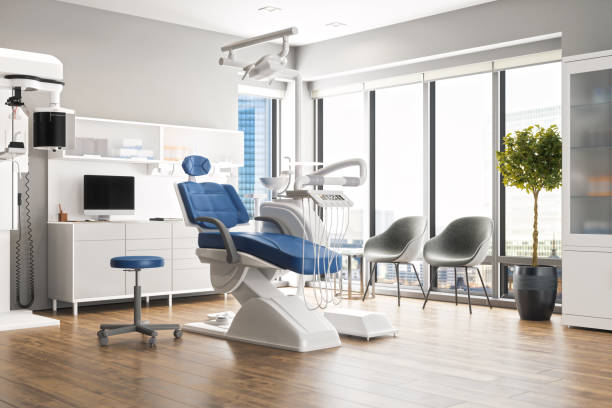
24 Jul How to Transition Patients and Staff During the Sale
Reasons For The Sale of Your Dental Practice
Selling a dental practice is a significant decision that various factors can influence. No one completely decides to give up on a lucrative business for just any reason. So, understand that these reasons range from personal motivations to market dynamics and changes in the broader healthcare industry. Here are several key reasons why a dentist might choose to sell their practice:

Retirement
One of the most common reasons for selling a dental practice is retirement. After decades of service, many dentists step back and enjoy their golden years. The practice can provide a substantial financial cushion, ensuring a comfortable retirement.
Health Issues
Health concerns, whether physical or mental, can also drive a dentist to sell their practice. The demanding nature of dental work can exacerbate health problems, making it difficult for some dentists to continue working. Selling the practice can allow them to focus on recovery and maintaining their overall well-being.
Desire for a Career Change
Some dentists may need a career change after years in the field. This desire for a new challenge or a different work-life balance can prompt the decision to sell the practice. Whether they want to pursue a different career path or reduce their work hours, selling the practice provides the financial flexibility to make such a transition.
Relocation
Another reason to sell a dental practice is to relocate to a different city or country. Personal reasons, such as a spouse’s job transfer, family obligations, or the desire to live in a different climate, can necessitate such a move. Selling the practice ensures that the dentist can relocate without the burden of managing a business from afar.
Financial Considerations
Financial motivations can also play a significant role. If the practice is not generating the desired income or if the dentist is facing personal financial challenges, selling the practice can be a way to resolve these issues. Additionally, a lucrative offer from a prospective buyer might be too good to pass up, prompting the decision to sell.
Burnout
The stress and demands of running a dental practice can lead to burnout. Managing patient care, dealing with administrative tasks, and keeping up with the latest industry developments can affect a dentist’s mental health. The practice allows them to escape these pressures and focus on their well-being.
Technological Advancements
The rapid pace of technological advancements in dentistry can be daunting. Maintaining the latest equipment, software, and treatment methods requires continuous investment and education. Some dentists might prefer to sell their practice rather than commit to the ongoing expenses and training needed to stay current.
Changes in the Healthcare Landscape
The healthcare industry is constantly evolving, with changes in regulations, insurance policies, and patient expectations. Navigating these changes can be challenging, and some dentists may decide that selling their practice is the best course of action to avoid the complexities and uncertainties of the evolving landscape.
Lifestyle Changes
Personal lifestyle changes, such as wanting to spend more time with family, travel, or pursue hobbies, can also motivate the sale of a dental practice. The demands of running a practice can be all-consuming, and selling the practice can provide the freedom to focus on other aspects of life.
Market Conditions
Favorable market conditions can also influence the decision to sell. If the local market for dental practices is particularly strong, with high buyer demand, a dentist might decide to sell to capitalize on these conditions. Conversely, if market conditions are expected to decline, selling sooner rather than later might be a strategic move.
Take Care of Your Staff and Patients During the Sale

Of course, the key to any business is the staff who run it and ensure that everything goes smoothly. You also have to remember that your patients may have some concerns. There should be considerations when it comes to them during this time.
Transitioning Staff
1. Early and Transparent Communication
Begin by informing your staff about the impending sale as early as possible. Transparency is key to maintaining trust. Explain the reasons for the sale, the timeline, and what they can expect during the transition. This approach helps to alleviate anxiety and rumors that could negatively affect morale.
2. Meet with Key Staff Members
Arrange individual meetings with key staff members to address their concerns and answer questions. These meetings provide an opportunity to reassure them about their job security and future within the practice. It’s also a chance to gather valuable feedback on how to make the transition smoother.
3. Provide Clear Information
Ensure that all staff members clearly understand their roles and responsibilities during the transition. Provide a detailed plan outlining the sale process steps, including important dates and changes they should anticipate.
4. Introduce the New Owner
Facilitate a meeting between the staff and the new owner. This helps to establish a personal connection and fosters a sense of continuity. Encourage the new owner to share their vision for the practice and how they plan to integrate the existing team.
5. Offer Training and Support
If procedures or systems change under new ownership, provide adequate training and support to the staff. This could include training sessions, workshops, or one-on-one mentoring to ensure a seamless transition.
6. Address Employment Concerns
Discuss employment terms with the new owner to ensure they are willing to retain the existing staff under similar conditions. If there are changes to benefits, hours, or roles, communicate these clearly and as early as possible.
7. Maintain Morale
Recognize that transitions can be stressful. Show appreciation for your staff’s hard work and dedication during this period. Consider organizing team-building activities or offering small incentives to maintain morale.
8. Legal and Contractual Considerations
Ensure that all legal and contractual obligations related to employment are addressed. This includes transferring employee contracts to the new owner, handling outstanding benefits, and ensuring compliance with labor laws.
Transitioning Patients
1. Communicate Early and Clearly
Inform your patients about the sale of the practice as soon as possible. Send a personalized letter or email explaining the reasons for the sale, introducing the new owner, and reassuring them about the continuity of care.
2. Emphasize Continuity of Care
Reassure patients that the quality of care they have come to expect will continue under the new ownership. Highlight any positive changes or improvements that the new owner plans to implement.
3. Introduce the New Dentist
Arrange for the new dentist to meet patients before the transition is finalized. This could be done through meet-and-greet events, during regular appointments, or through introductory videos and letters. Personal interaction can help build trust and ease patients’ concerns.
4. Update Practice Materials
Ensure that all practice materials, including brochures, websites, and social media, are updated with information about the new owner. This consistency helps to reinforce the message of continuity.
5. Address Patient Concerns
Be proactive in addressing any concerns patients might have about the transition. Provide a Q&A section in your communications that anticipates common questions and offers clear, reassuring answers.
6. Review Patient Records
Ensure a seamless transfer of patient records to the new owner. Verify that all records are up-to-date and that the new dentist is familiar with current patients’ histories and treatment plans.
8. Plan for the Transition Period
Allow for a transition period where you can assist the new owner in getting to know the patients and the specific nuances of their care. This can be particularly important for patients undergoing complex or ongoing treatments.
9. Monitor Patient Feedback
After the transition, seek patient feedback about their experience with the new owner. Use this feedback to address any issues promptly and help the new owner make necessary improvements.
10. Celebrate the Transition
Host a small event or open house to celebrate the transition. This provides a positive closure for you and a welcoming atmosphere for the new owner. It also allows patients to meet the new dentist in a relaxed, social setting.
Conclusion
Transitioning a dental practice’s staff and patients during a sale is a delicate process that requires thoughtful planning and communication. By being transparent, addressing concerns proactively, and ensuring a smooth handover, you can maintain the trust and loyalty of both staff and patients.


Sorry, the comment form is closed at this time.